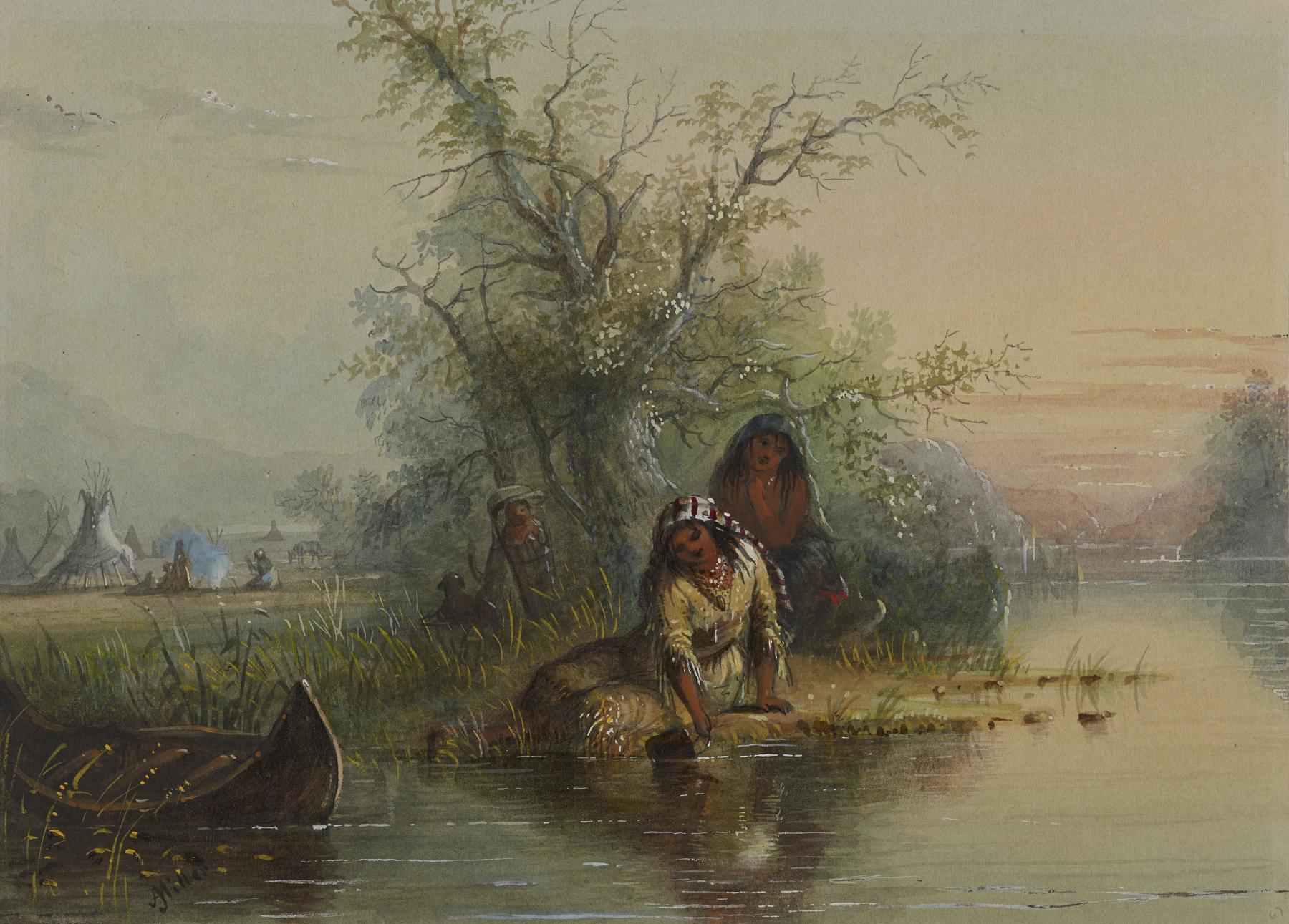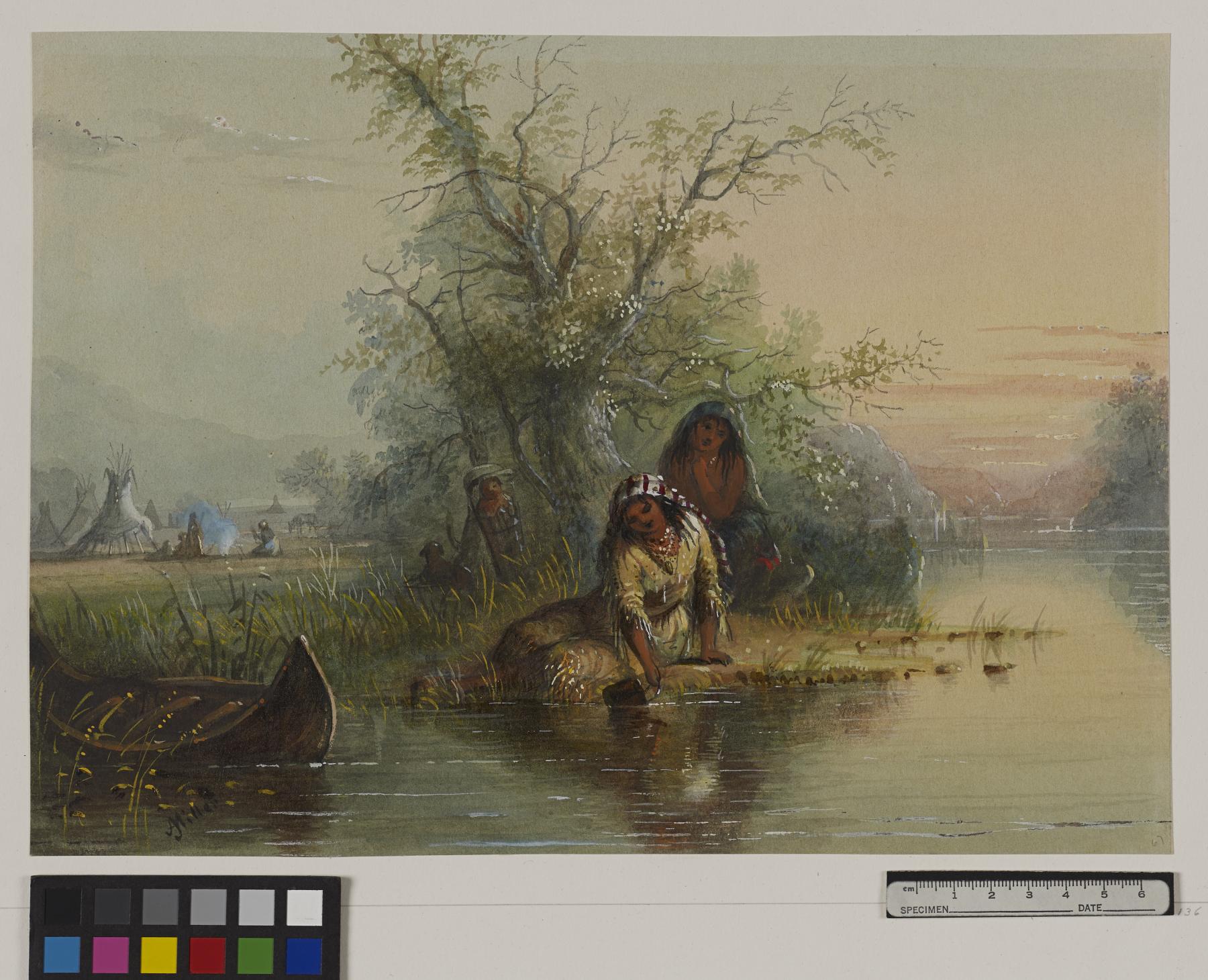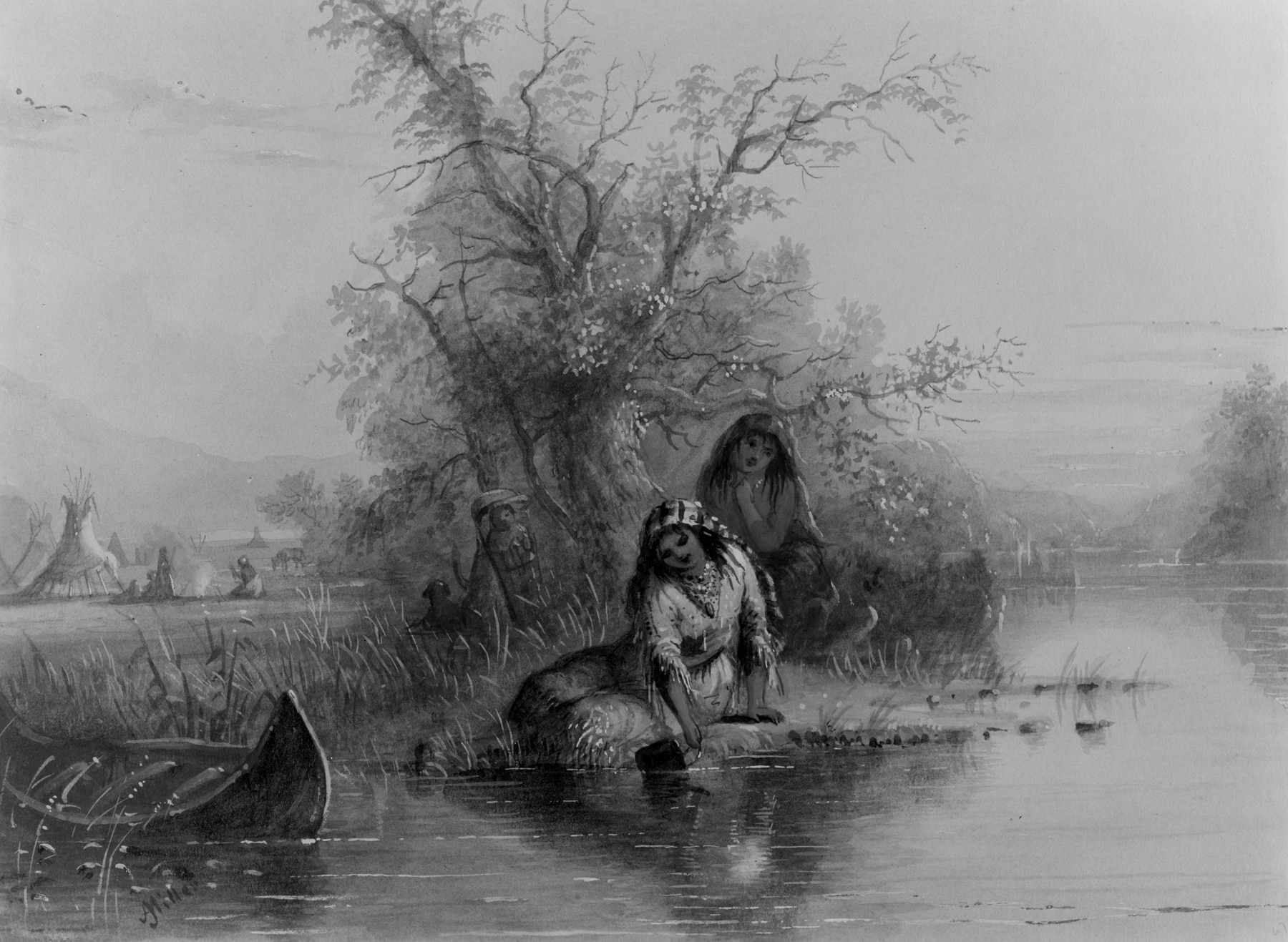Indian Encampment on the Eau Sucre River
(18th and 19th Centuries )
Extracts from Alfred Jacob Miller’s original text, which accompanied his images of Native Americans, are included below for reference. These words, which shaped how Miller’s contemporaries viewed the watercolors, reveal the racism and sexism embedded in 19th-century exploration and colonization of the western part of what is today the United States.
"The sketch presents an almost Arcadian scene, the simple minds of the savages gives them no brighter heaven hereafter. Their paradise is constructed with (at least) as much facility as a Persian... It is a question whether, with all our boasted civilization, we enjoy more real happiness than these children of the prairie, on whom we exhausted a deal of superfluous sympathy. They would certainly not be willing or in a hurry to exchange with us; and are at least contented with their lot. We (generally speaking) never are;- so that after toiling through pain and suffering for a life time, withough (rarely if ever) being able to accomplish the work before us, we go out of the world in about the same sort of stupid astonishment with which we came into it. The scene is on the River Eau Sucre, two Indian women are seated on its borders, and in the distance an encampment. In the immediate foreground is an Indian canoe, made of Birch-wood bark. These boats are light and swift, are beautifully modelled; and reminded one much of the Gondolas of Venice." A.J. Miller, extracted from "The West of Alfred Jacob Miller" (1837).
In July 1858 William T. Walters commissioned 200 watercolors at twelve dollars apiece from Baltimore born artist Alfred Jacob Miller. These paintings were each accompanied by a descriptive text, and were delivered in installments over the next twenty-one months and ultimately were bound in three albums. Transcriptions of field-sketches drawn during the 1837 expedition that Miller had undertaken to the annual fur-trader's rendezvous in the Green River Valley (in what is now western Wyoming), these watercolors are a unique record of the closing years of the western fur trade.
Inscription
Provenance
Provenance (from the French provenir, 'to come from/forth') is the chronology of the ownership, custody, or location of a historical object. Learn more about provenance at the Walters.
William T. Walters, Baltimore, 1858-1860, by commission; Henry Walters, Baltimore, 1894, by inheritance; Walters Art Museum, 1931, by bequest.
Geographies
USA (Place of Origin)
Measurements
H: 8 15/16 x W: 12 1/16 in. (22.7 x 30.7 cm)
Credit Line
Commissioned by William T. Walters, 1858-1860
Location in Museum
Not on view
Accession Number
In libraries, galleries, museums, and archives, an accession number is a unique identifier assigned to each object in the collection.
In libraries, galleries, museums, and archives, an accession number is a unique identifier assigned to each object in the collection.
37.1940.136







